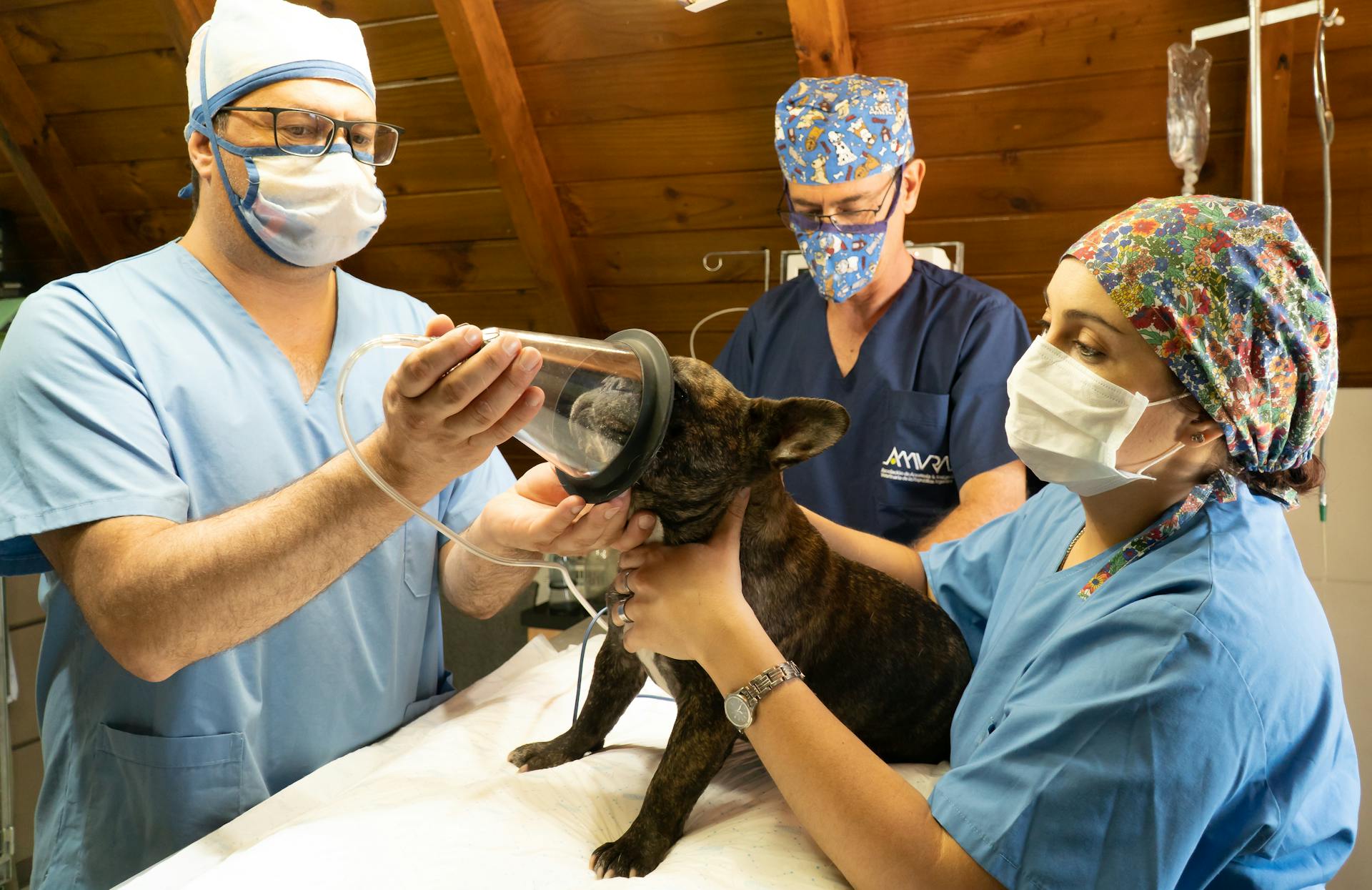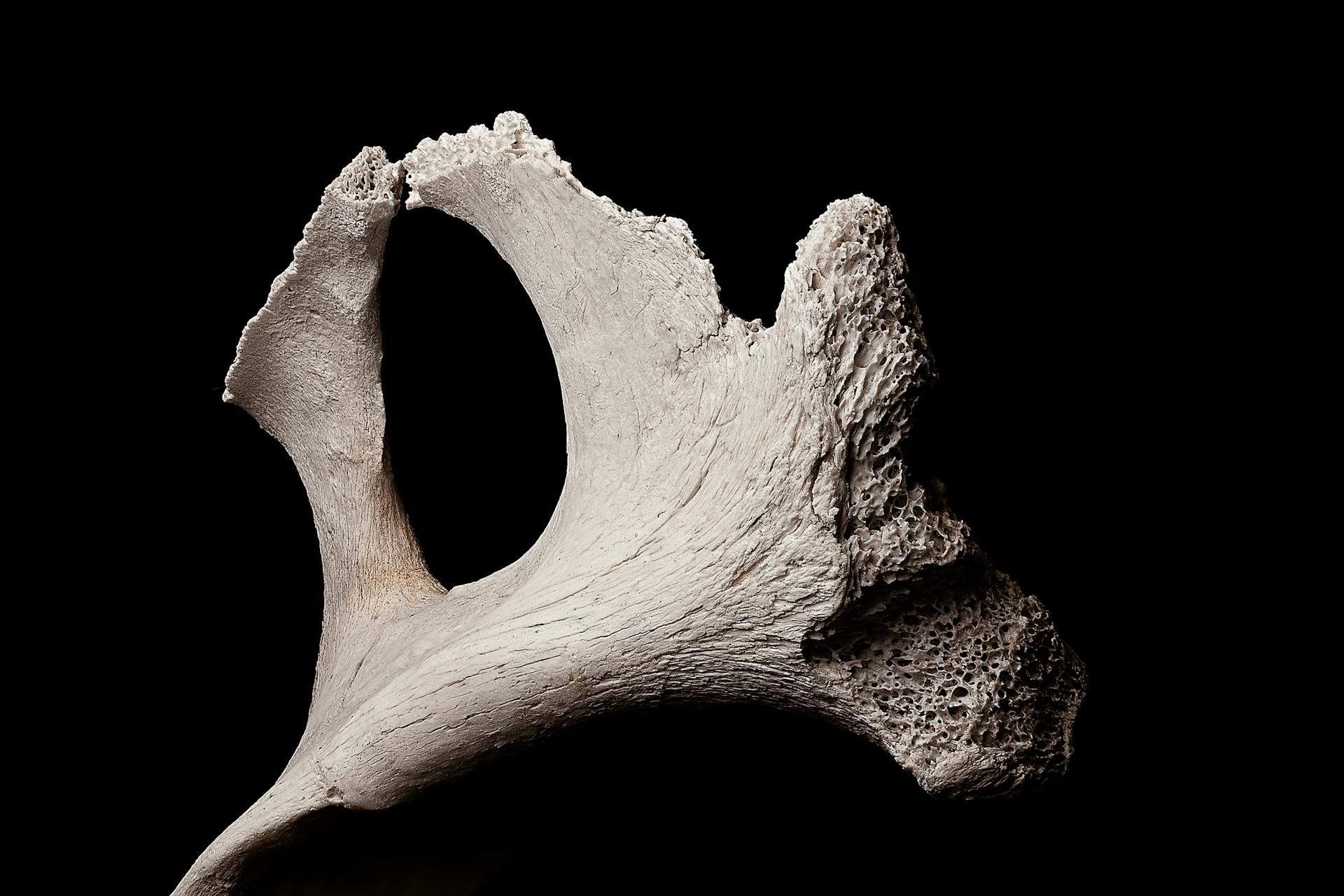
Bone cancer in cats and dogs is a serious condition that requires prompt attention.
Osteosarcoma, a common type of bone cancer in dogs, often affects the limbs, particularly the legs and pelvis.
Bone cancer in cats is less common, but still a significant health issue, with the majority of cases affecting the limbs.
Symptoms of bone cancer in both cats and dogs may include lameness, swelling, and pain in the affected area.
Causes and Risk Factors
Bone cancer in cats and dogs can be caused by a combination of genetic and environmental factors.
Genetic predisposition plays a significant role, with certain breeds being more susceptible, such as golden retrievers and German shepherds.
Radiation exposure is a known risk factor, as it can damage the DNA of bone cells, leading to cancer.
Older age is also a risk factor, as the risk of bone cancer increases with age, especially in dogs over 7 years old.
Obesity can also contribute to the development of bone cancer, as excess weight can put additional stress on the bones.
In cats, a history of trauma or injury to the bone can increase the risk of bone cancer.
Diagnosis
Diagnosis of bone cancer in cats and dogs typically starts with a physical and orthopedic examination by your vet to rule out other causes of lameness. X-rays of the affected area can also be helpful to identify any possible tumors.
A biopsy of the affected area is usually necessary to confirm a definitive diagnosis. This involves taking a sample of the tissue to examine under a microscope. Blood tests, urinalysis, and chest X-rays or a CT scan may also be performed to assess your pet's overall health and determine if the cancer has spread.
In 90 to 95 percent of dogs, bone tumors usually spread to the lungs, so your vet may recommend X-rays of the lungs prior to pursuing further therapy. Additional tests, such as a CT scan or ultrasound, may be recommended based on the results of these tests.
Related reading: Boston Terrier Brain Tumor Symptoms
Signs of
Signs of bone cancer in dogs and cats can be subtle, but it's essential to recognize them early on.
Loss of appetite and lethargy are common symptoms, making it challenging for pet parents to notice them at first. I've seen dogs that are normally energetic and playful become sluggish and uninterested in their favorite activities.
Neurologic signs, such as a wobbly gait, can be a sign of bone cancer in dogs. This can be alarming to witness, especially if your dog is normally steady on their feet.
Indications of severe pain are another common symptom, which can be heartbreaking to see in your furry friend. Look for signs like whining, panting, or restlessness.
Discharge from the nostrils, breathing difficulties, and swelling in various parts of the body are also possible symptoms.
Here are some specific signs to watch for:
- A hard or soft swelling that gets bigger with time
- Trouble eating if the tumor is in the jawbone
- Lameness of the injured bone
- Seizures
- Unsteady manner of walking with skull or backbone tumors
- Trouble breathing with rib tumors
Swelling in the ribs, spine, legs, or jaw can also be a sign of bone cancer. Keep an eye out for any unusual growths or lumps on your pet's body.
Limping or lameness can be a sign of bone cancer, especially if it's accompanied by other symptoms like pain or swelling. It's essential to take your pet to the vet if you notice any of these signs.
Diagnosis and Staging
A diagnosis of bone cancer in dogs and cats typically starts with a physical and orthopedic examination by your vet. They'll check for signs of lameness that isn't improving with rest or supportive medication.
X-rays are a crucial part of the diagnosis process, as they can help rule out other issues such as fractures or soft tissue injuries. In fact, X-rays can show characteristic appearances of primary bone tumors.
To get a definitive diagnosis, your vet will likely perform a biopsy on the affected area. This is usually done after a tumor appears on the X-ray.
Blood tests, urinalysis, chest X-rays or a CT scan may also be performed to assess your pet's overall health and determine if the cancer has spread. In dogs, the cancer often spreads to the lungs, which is why chest X-rays are commonly done.
Here's a summary of the typical diagnostic steps:
- Physical and orthopedic examination
- X-rays to rule out other issues and show tumor characteristics
- Biopsy to confirm the diagnosis
- Blood tests, urinalysis, and chest X-rays or CT scan to assess overall health and check for cancer spread
Keep in mind that advanced CT imaging is often recommended for osteosarcoma tumors of the limbs, as it provides better information for a veterinary surgeon to determine if surgery is possible and the extent of surgery necessary.
Life Expectancy and Prognosis
The prognosis for pets with osteosarcoma depends on the severity and spread of the disease and on the treatment you choose. The earlier it is diagnosed and treated, the better the chances that treatment will be successful.
For dogs with bone cancer, the prognosis is often poor since the disease is often not detected until it has become fairly advanced and has begun to spread. Your veterinarian will take the time to discuss the best treatment options and prognosis for your dog.
In cats, osteosarcoma occurs less often than in dogs, but still occurs most commonly in the bones of the legs. Osteosarcoma does not appear to metastasize as often in cats than in dogs, which means chemotherapy is not always recommended for cats following amputation.
The prognosis for pets with osteosarcoma can vary greatly depending on the specific tumor type, stage of the cancer, and treatment. Your veterinarian will work with you and your family veterinarian to provide the best care for your pet.
Curious to learn more? Check out: Best Homemade Food for Dogs with Cancer
Here are some general treatment options for osteosarcoma in cats and dogs:
- Amputation of the affected limb
- Limb-sparing surgery, where the tumor is removed and donor bone is implanted
- Stereotactic radiation (SRS/SRT), which focuses high doses of radiation to damage and kill osteosarcoma cells
- Post-operative chemotherapy to delay the spread of the osteosarcoma throughout the body
- Palliative treatment, which aims to make your pet more comfortable but doesn’t provide a cure
With the right treatment, some pets can live for several months after diagnosis. However, the life expectancy and prognosis for pets with osteosarcoma can vary greatly depending on the individual case.
Frequently Asked Questions
How aggressive is bone cancer in cats?
Bone cancer in cats is relatively less aggressive compared to dogs, but still requires early detection and treatment due to its potential to spread quickly. Osteosarcoma, the most common type of bone tumor in cats, is a serious condition that demands prompt attention.
How long will a dog live with bone cancer?
Survival rates for dogs with bone cancer vary, but generally, dogs can live for 11-18 months with treatment, depending on the tumor's location. Treatment outcomes can be improved with proper care and attention.
What is the most common type of bone tumor in dogs and cats?
In dogs, malignant osteosarcomas are the most common type of bone tumor, while in cats, both malignant and benign tumors are equally distributed.
Sources
- https://www.animalhospitalofclemmons.com/site/veterinary-pet-care-blog/2021/01/15/signs-of-bone-cancer-in-dogs
- https://www.vanluevetsurg.com/blog/diagnosing-treating-bone-tumors-in-cats-dogs.html
- https://petcureoncology.com/what-you-should-know-about-osteosarcoma-bone-cancer-in-cats/
- https://www.medvet.com/primary-bone-tumors-in-dogs-and-cats/
- https://www.amcny.org/blog/2020/11/11/bone-cancer-in-dogs-and-cats-what-you-need-to-know/
Featured Images: pexels.com


